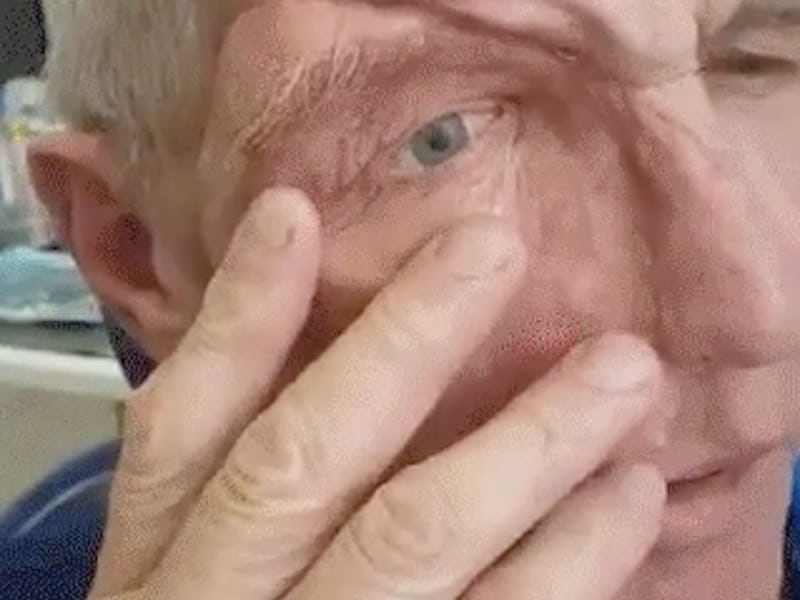One of the stranger places on reddit is r/wtf, a churning forum for images that immediately make the mind curious. Its a chasm of the strange, interesting, and seemingly inexplicable, and a video of a man removing a facial prosthesis and then his upper dentures, sat at the top of the subreddit this week. While the man’s identity and condition have been debated in the comments to no resolution, many commenters responded with shock and awe.
Warning: The footage below is slightly graphic.
The man’s prosthesis is similar to those created by medical professionals for those who have survived facial injury due to violence or diseases like cancer. Anaplastology is a branch of medicine in which non-physicians collaborate with patients to create custom prosthetics to restore the patient’s anatomical structure — whether that be a new eye, nose, or part of the face.
3-D printing has revolutionized prosthetics.
Hand-sculpted, painted, and pigmented prosthetics, essentially works of art on their own accord, can cost up to $15,000 and several weeks to create. Because of this is prohibitively expensive and time-consuming for many patients, facial prosthetics are being replaced by less expensive 3D printed alternatives. Each prosthesis can be customized for the need of the patient, whether it’s to add an ear piercing or a post-vacation shade of tan.
In a 3D printing process designed by University of Miami researchers in 2014, patients are scanned on the undamaged side of the face with a mobile scanner and specialized software creates a mirror image. The parts of the face with defects are also scanned, then merged together with the previous scans to create a 3D image of the face. A 3D printer then shoots out an injection-molded rubber prosthesis based off that topographical information, complete with the pigments of the patient’s skin tone.
Prosthetic eyes created by U.S. Air Force doctors.
And there’s a chance facial prosthetics will become even more accessible. Brazilian Carlito Conceiçao became famous in 2016 for being the first person to receive a prosthesis 3D-printed from a smart phone. He had lost his right eye socket and part of his nose to an aggressive form of cancer called upper maxillary carcinoma. Dr. Rodrigo Salazar used a free app called Autodesk 123D Catch to print him replacement facial components.
Shirley Anderson’s life was also transformed by advancements in 3D printed. Anderson lost his jaw and Adam’s apple from complications following tongue cancer in 1998. He received a facial prosthesis in 2016 from researchers at the Indiana University School of Dentistry, who used 3D printing replace about 75 to 80 percent of the process in traditional prosthetic fabrication.
Doctors looking to provide their own patients with 3D printed anatomical models can look at white papers online provided by Form Labs, the 3D printing company that partnered with Anderson’s doctors to create his own life-changing prosthetics.
